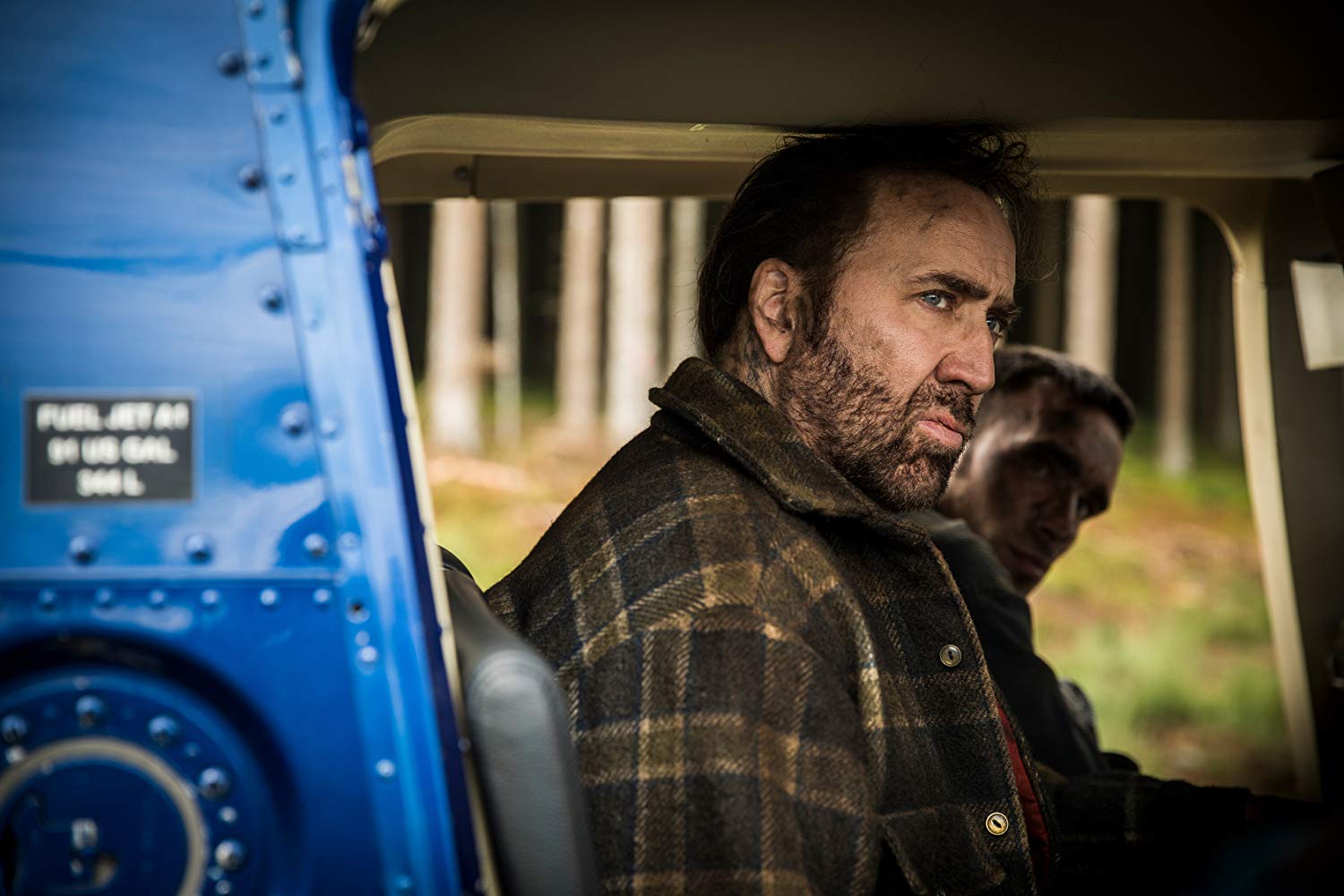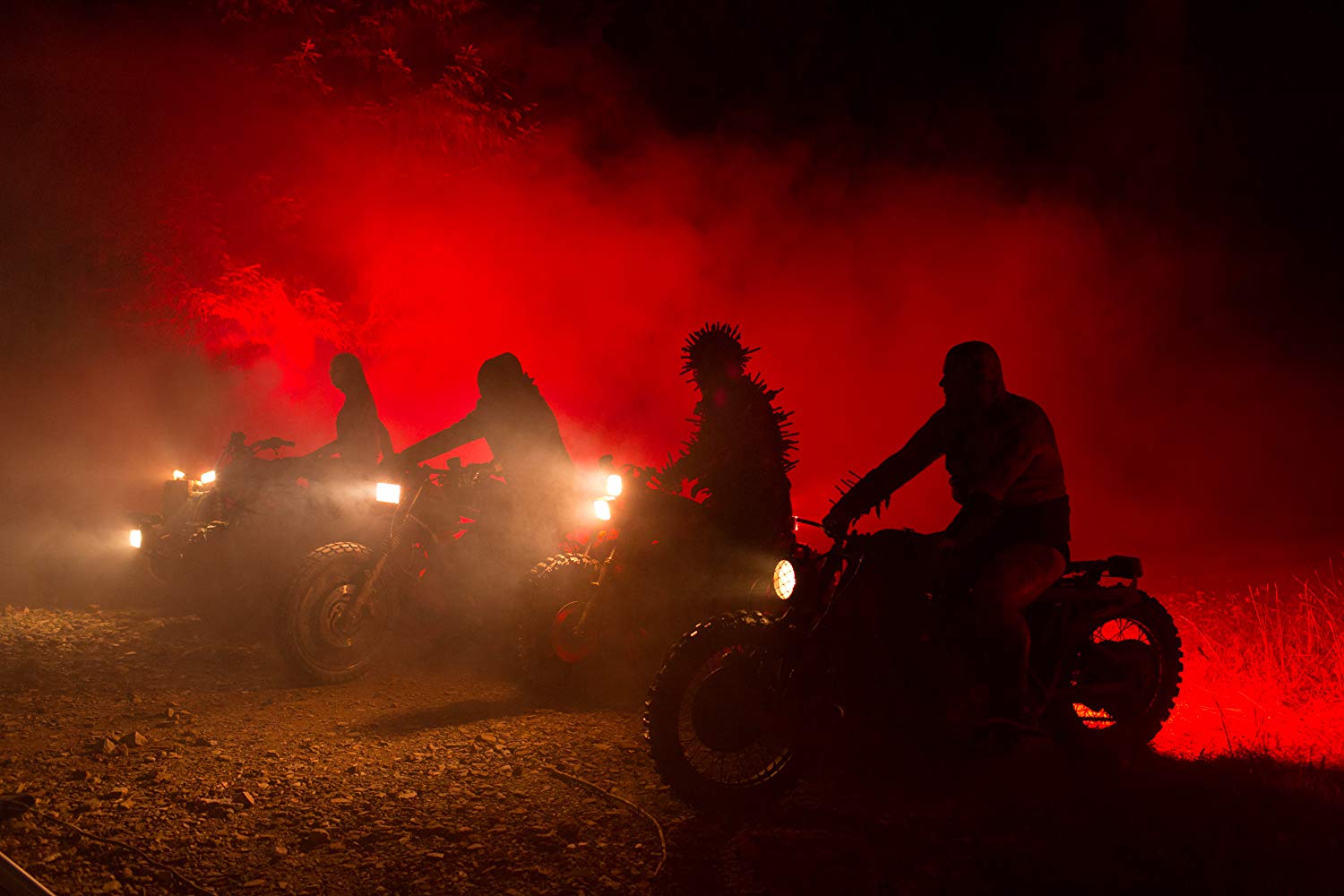Film of the Week: Mandy

A few years ago, I was showing a selection of classic Surrealist films—Un Chien Andalou and the rest—to a class of students who had never seen any before. At the end, I asked for responses. There was a silence, then one person tentatively said, “Looks to me like they’re just being weird for the sake of being weird.”
My first reaction was disappointed that no one was more enthusiastic about these revolutionary works—and then I thought, well, yes, this kid has pretty much nailed Surrealist cinema in one sentence. Writing and painting are one kind of Surrealist activity, single-handed undertakings that might theoretically, bypassing the checks of conscious logic, provide a direct unmediated route to the unconscious. But if you’re making a Surrealist film, the result is weird because you intended it to be weird, and you’ve gone to considerable lengths to make it weird: you’ve told your art director you want a dead donkey, and only the right dead donkey will do. Oh, and bring more ants—a lot more ants.
That’s why it sometimes feels uncomfortable making judgments about films that are concertedly outré, because as often as not, they just don’t feel entirely organic—as if we can’t believe that they’ve sprung unhindered direct from the depths of a filmmaker’s psyche. The stranger a film is, the more we’re likely to object that its director is striving for effect. Well, isn’t that what filmmakers do, strive for effect? Sometimes a lot of striving is needed: think how hard it is to make even everyday realism look remotely believable. And can we really demand that any impressive cinematic effect should look effortless—like it just somehow happened?
Panos Cosmatos’s Mandy is the epitome of a film that might easily seem to be trying too hard—yet it flaunts its panoply of artifice so ostentatiously that it makes a mockery of the idea that style and eccentricity in film should come across as in any way natural, or casual. Canadian director Cosmatos doesn’t just push the boat out in Mandy, he mobilizes the whole fleet, on a brutally aggressive war footing. This film is extravagantly nuts, and not the least crazy thing about it is that a revenge-horror freak-out featuring a chainsaw duel and a copiously blood-soaked Nicolas Cage should have the title Mandy; maybe next time, Cosmatos will stage the apocalypse and the rising of a million demons from Hell’s bowels, and call it Betty.
Mandy is set in 1983—why, I’m not entirely sure, except that this period is singularly fashionable these days, and for a young audience may be as close as recent history gets to a long time ago and a galaxy far, far away. Also, there were some horrific hairstyles. Cage plays Red Miller, who works at a logging camp in what a caption tells us are “the Shadow Mountains.” He lives in a big greenhouse-like dwelling in the forest with a young woman called Mandy (Andrea Riseborough, muted but consistently unnerving) who works at a petrol station and spends her spare time painting elaborate illustrations that look like the jackets of the fantasy paperbacks she reads.

At night, the duo like to nestle down at home, tenderly discussing their favorite planets and the like—and the odd traumatic childhood experience of hers—while the night glows deep blue, and the forest in the background turns crimson. Occasionally the skies overhead fill with twinkling, glittery mist of various hues. Indoors, the lovers are sometimes steeped in overlapping fields of pastel light. Later in the film, slabs of deep pink fill the screen like artist James Turrell’s installations of light and vapor. Things are destined to get very odd in Mandy’s world, not least chromatically, but the visuals established at the start by Cosmatos and DP Benjamin Loeb ensure that there’s absolutely no recognizable baseline of normality to begin with.
One day, Mandy takes a walk on the roads nearby—in deep pink-red, naturally—and happens to exchange an extended gaze with the occupant of a passing van. He is Jeremiah (Linus Roache), the leader of a cult called “Children of the New Dawn”—as we’re told by one of the elaborately designed, psychedelically baroque captions that flash up intermittently. Jeremiah has taken a fancy to Mandy, and sends his minions out to kidnap her. He has two sets of minions, in fact. One is his inner circle of hangers-on, which include the very creepy starer Brother Swan (Ned Dennehy), a seraphic fat boy who comes to an abrupt nasty end, and a skinny grey-haired woman called Mother Marlene (Olwen Fouéré). This crew—using something called the “Horn of Abraxas,” which basically resembles a prehistoric ocarina—summon further minions, a demonic phalanx of masked and armored figures with clawed hands, who communicate in raspy gastric burbles. They look like reserve members of Slipknot, but are in fact a local bike gang who were once slipped a “special batch” of acid and have never been the same since.
Jeremiah’s attempted seduction of Mandy is the film’s ripest moment, not least for his question (and if ever a line shamelessly had instant notoriety programmed into it…), “Do you like the Carpenters?” Like Charles Manson, Jeremiah is a failed folkie, but at least he got to make his own LP, all jingling guitars and Pied Piper flutes. Stripping off his robe—a padded white number with vast lapels, like something Todd Rundgren might have worn onstage in his glam-era pomp—he glares deep into Mandy’s strange black eyes and, in a brilliantly eerie effect, his and her faces start morphing into each other.
Even despite this mind-melding—and despite his minions softening her up with the sting of a giant wasp thing fished out of a jar—Mandy isn’t impressed, so Jeremiah very horribly vents his spleen on her, and on Red. Bloodied, traumatized and by now liberally coated in gore, Red vows revenge in a scene where Cage simply lets go a little more wholeheartedly than even he has before. It’s a tribute to its lead actor that, even in a film that’s about as militantly bizarroid as you can imagine, the very strangest moment is simply Cage in sweatshirt and underpants, bellowing in primal rage, in a glaringly orange ’70s-style bathroom shot with a wide-angle lens.

From this point on, Cage is essentially less a man than a rampaging golem—and if he’s been this in several of his films, he’s simply more so here by virtue of being bulky, bearded, and blood-slicked throughout. Embarking on his quest, he checks in on an old friend (Bill Duke) to collect his crossbow and some special arrows (“They cut through bone like a fat kid through a cake,” Duke says). Then we see him forging his own mediaeval-style weapon, a giant halberd or something of that ilk (presumably in the Shadow Mountains, loggers also get to train in specialist blacksmithery).
Red promptly ends up captured and tortured again, but it’s only a slight delay; after giving his next tormentor a brisk dispatch (“You’re a vicious snowflake”), he’s off, to take on foes including a biker with a scimitar codpiece and a Bill-from-Kill Bill character (Richard Brake), an LSD manufacturer with a pet tiger. Eventually he confronts Jeremiah himself, a character who allows Linus Roache—whom I’d always thought of as an urbane, sensitive kind of actor—to go the full Dennis Hopper. Well, if you’re playing a duel to the death with Nicolas Cage, you’d probably want to up your game a little.
Is Mandy trying a little hard to impress? You might say so: there’s barely a shot here that doesn’t look like the sleeve of an ’80s metal LP, the sort that would turn out to be two sides of backward satanic messages and no music. Cosmatos is fond of concocting digressive purely-for-the-hell-of-it touches—like a TV ad for a product called Cheddar Goblin, in which a green imp vomits cheese over delighted children. Red also dreams in animations featuring his beloved as a cheesecakey sword-and-sorcery queen. And there’s a brief but startling sequence in which Red tastes the merest fingertip dab of some grey gunk from a jar and—ker-blooey!—gets a spectacular, rapid-fire eye-and-mind-frying acid burst, like Gaspar Noé’s Into the Void crushed down into a few super-concentrated seconds. How eager is Cosmatos to push the boat out and impress? Let’s not forget, he’s gone to the trouble of getting hold of a real tiger—a rather magnificent one, at that—just for the novelty of having it called Lizzie.
One of Jeremiah’s dopier minions seems to have trouble closing his mouth, and that’s the effect that Cosmatos wants to have on us: practically everything he does, you imagine him thinking, “If this doesn’t have their jaws scraping the floor, nothing will.” Everything in Mandy is set to the proverbial 11: not least the instruments in the final score by the late Jóhann Jóhannsson, which—alongside some magnificently ominous Shining-esque synthesized “Dies Irae” touches—features intensely feral guitar from Stephen O’Malley of art-metal band Sunn O))). When Red and an opponent rev up their chainsaws for a sparks-gushing showdown, that’s O’Malley you can hear out-revving both of them.
You’re either going to buy Mandy or you’re not. Personally, I’m at the impressed-observer end of the spectrum; it’s not really in my cinematic or pop-cultural DNA to really love a film like this. But if you enjoy rampant eccentricity and sometimes inspired expressionistic excess, you’ll warm to a director whose motto—like the sign on the front of Ken Kesey’s Merry Pranksters bus in the ’60s—might well be “Furthur” (and probably with the addition of a couple of heavy metal umlauts). There are two major visual payoffs in the final sequence. One is a closing shot that does something profoundly strange with what we expect to be a normal landscape (which, I imagine, is what led critic Glenn Kenny to dub this film “pulp Tarkovsky”). The other is a shot of a ferally jubilant Cage mad-eyed and grinning through a face smeared with slaughterhouse scarlet. Admit it, it’s the way that one day you always expected to see him. To tweak a much-loved line from one of his other way-out-there roles, “To the break a’ doom!!!”
Jonathan Romney is a contributing editor to Film Comment and writes its Film of the Week column. He is a member of the London Film Critics Circle.







